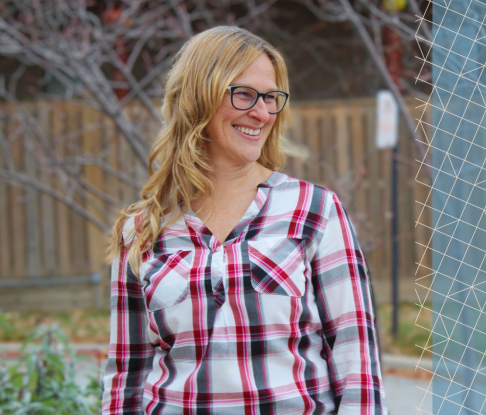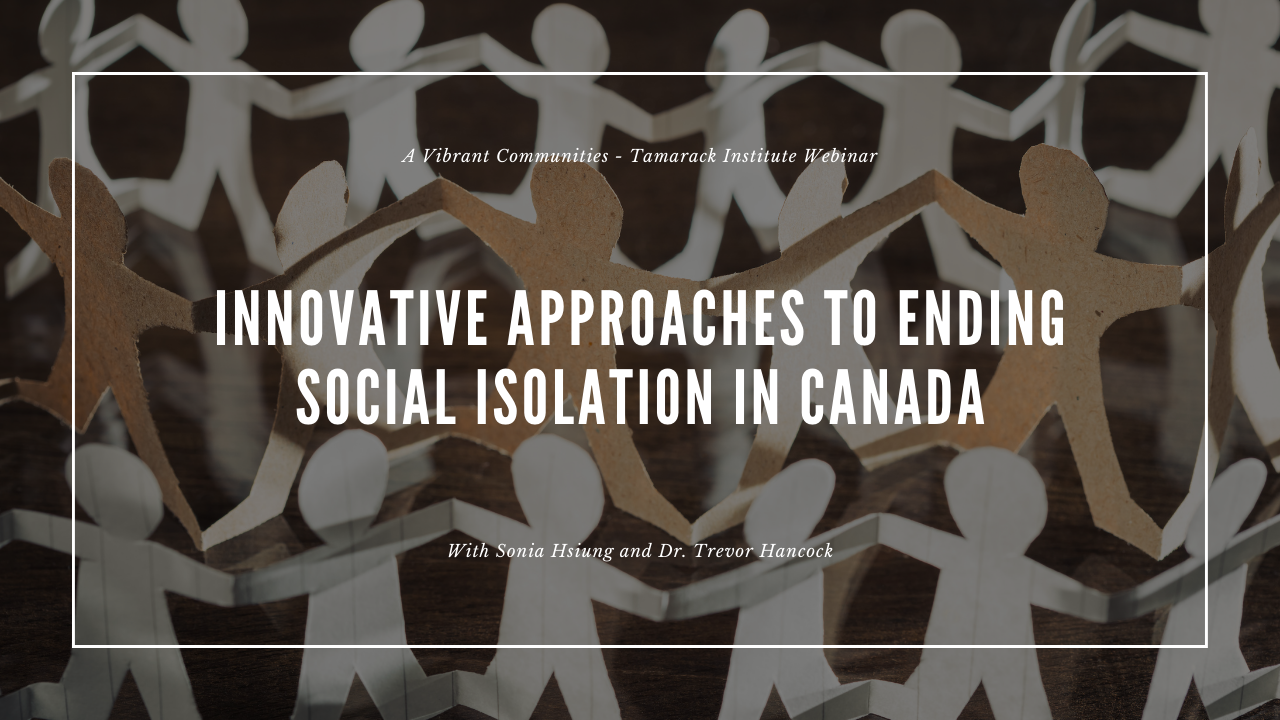guide | fighting loneliness through conversations on belonging
How to host local conversations and call for a National Strategy for Belonging
By Heather Keam
The Tamarack Institute is a registered Canadian charity dedicated to ending poverty in all its forms, for good. We support real people and invest in real communities for long-term change.
This guide was developed to help communities, non-profits, changemakers, volunteers, municipalities and everyday residents join the call for a Canada-wide Belonging Strategy. You will learn how to effectively facilitate conversations on community belonging, include diverse voices, and more. Discover our call for a Strategy for Belonging.
Using this guide:
Download the PDF version of this guide for interactive forms you can fill out for your convenience. Refer to the appendices in Section 2 for tools and resources you can print off and use in your community.
Background: how bad is loneliness for our health?
Over the past decade, Canada, like other countries, has seen an increase in loneliness and social disconnection. Even though technology keeps us more connected than ever, many people feel increasingly disconnected and lonely. This loneliness can have serious effects – research shows that feeling lonely is as bad for your health as smoking 15 cigarettes a day.
To address this growing issue, the Tamarack Institute introduced the idea of creating a nationwide Belonging Strategy at our 2023 Asset-Based Community Development event. The idea is to support local communities – focusing on residents and community groups – to create and implement solutions that reflect the needs and voices of their own neighbourhoods. This Canada-wide strategy would also ensure that there are ongoing resources (federal and provincial) dedicated to supporting those who work in and care for our communities.
to move forward, We need a strategy that:
- Engages Communities: Involve residents, organizations, and local leaders from different regions across Canada to understand their specific needs and challenges.
- Develops Local Solutions: Encourage communities to design their own plans that reflect the voices of Indigenous, Black, and other racialized groups; people with low incomes, disabilities, or who identify as 2SLGBTQ+; newcomers; youth; and people with multiple identities.
- Secures Local Funding: Ensure steady funding and resources are available to support those who care for their communities and sustain these local efforts.
- Builds Partnerships: Foster collaboration across different sectors to unite individuals, associations, and organizations so that they share resources and expertise.
- Monitors and Evaluates: Track the progress of these initiatives to identify successful efforts, scale them, and refine the strategy to improve its effectiveness.
- Sustains Local Efforts: Ensure long-term commitment by securing ongoing support from all levels of government and other key partners.
To build this strategy, we need to start with conversations within communities across Canada. This will help us learn what is strong, what assets we already have, and what we need to inform the federal government on how to shape the strategy. Your communities’ voices, ideas, and participation are crucial to this process.

we are putting local into a federal strategy
Purpose of Community Conversations:
The goals of this call for community conversations include:
- Get a local perspective on the state of belonging in your communities
- Discover what is already being done to address isolation
- Identify challenges and potential solutions
- To help define roles for different players and participants
How you can help:
We hope to mobilize our partners, members and networks to organize and host conversations. This initiative can take many forms and does not need to be complicated or formal. Examples include casual kitchen conversations, discussing your group's agenda, or simply conversing with your neighbours. Tamarack aims to get 100,000 voices from all provinces and territories in Canada to contribute to the belonging strategy. Along with our partners, we will then synthesize the data collected, put together recommendations, and present them to the Federal government in 2025.
Have you already held a conversation around belonging? Let us know!
Contact Jorge at jorge@tamarackcommunity.ca.
Timeline:
October, 2024 – December, 2024
Helpful links:- Communities Building Belonging
- Article: Community Belonging: A Way to End Poverty in Canada
- Reporting: Use this guide digitally or by printing the PDF version of this guide
- Draft Invitation: See Appendix #3 in the PDF version of this guide
Thank you for supporting the Canada-wide Belonging Strategy. We have put together this guide to assist you in organizing conversations around belonging in your community. If you have any questions, please reach out to Jorge Garza at jorge@tamarackcommunity.ca.
Yours in Conversation,
The Tamarack Institute and Partners
the conversation guide
Section #1: Getting Started
Download the PDF version of this guide for interactive forms you can fill out for your convenience. Refer to the appendices in Section 2 for tools and resources you can print off and use in your community.
We encourage participation from people of diverse backgrounds, voices, lived experiences, and cultures to enrich the conversations. Hosting a conversation doesn’t need to be complicated.
Here are a few ideas and considerations when planning for your conversations:
- Who have you already met with? Do you have committees or groups that are already meeting that you can add this to the agenda?
- What groups and clubs do your kids participate in? Would they be willing to add this to the list of activities for the kids?
- Are you a teacher? Can this be part of your curriculum?
- Does your workplace host lunch and learns? Can you organize a conversation at a staff meeting?
- Are you part of a club or association that you can ask to put this on the agenda?
- Do your neighbours have block parties? Can you host a block party conversation?
Decide on what kind of conversation you want to have
You can host a traditional conversation where participants gather in a room, and you guide them through the discussion. Consider who will attend and the best way to gather input. You know your community best—enjoy the process!
- How to host a Conversation Café – set up tables with food and drinks and the tables use the questions for discussion
- How to host open space conversations- post the questions around the room and people move from question to question and write their responses
- Graffiti wall- use words or drawings to answer the questions
Choose a space that invites conversation
- Somewhere relatively quiet and free from distractions and interruptions
- Somewhere familiar and accessible to all who want to participate
- Somewhere comfortable with enough room for everyone to sit in one big circle
Make it welcoming!
- Be sure to greet and welcome people
- Introduce people to each other
- Thank them for coming
- Make it celebratory – flowers, snacks and music all help create a sense of joy and fun
- Share accessibility considerations ahead of time (for in person and online events). For example, if the space has a set of staircases, if bathrooms are universal, if participants need high-speed internet, etc.
Logistics and supplies
- The conversations last approximately one hour depending on the number of questions you want to add to the core list of questions
- Print off the Appendices (see below p. 8 or refer to the quick links on p.1)
- Bring along markers, paper and pens in case people want to take notes or draw pictures to represent their answers
- Ask people to sign a consent form with their name and email so that we can share any of the information that was provided
- You will need someone who can take notes directly into the conversation form, or you can take notes and enter them later
Create a Safe Container “to Hold” the Conversation
The goal of a great conversation is to help people to think together. To achieve this, it is often helpful to outline – and get agreement on guidelines – for the conversation. These can include:
- Turn off cell phones
- Listen with attention
- Be comfortable with silence
- Speak with intention
- Ask questions
- Be open to new ideas and possibilities
- Be tolerant and willing to shift your opinion
- Attend to the well-being of the group
- Make it clear how long the session will last, where bathrooms are, how/when people can take breaks
- Let people know, ahead of time, what you are planning to do with the info they share AND who will have access to the information shared
- Have fun! Remember that there is no wrong way to have a conversation.
Download the PDF version of this guide for the remaining sections and interactive forms you can fill out for your convenience. Refer to the appendices in Section 2 for tools and resources you can print off and use in your community.






